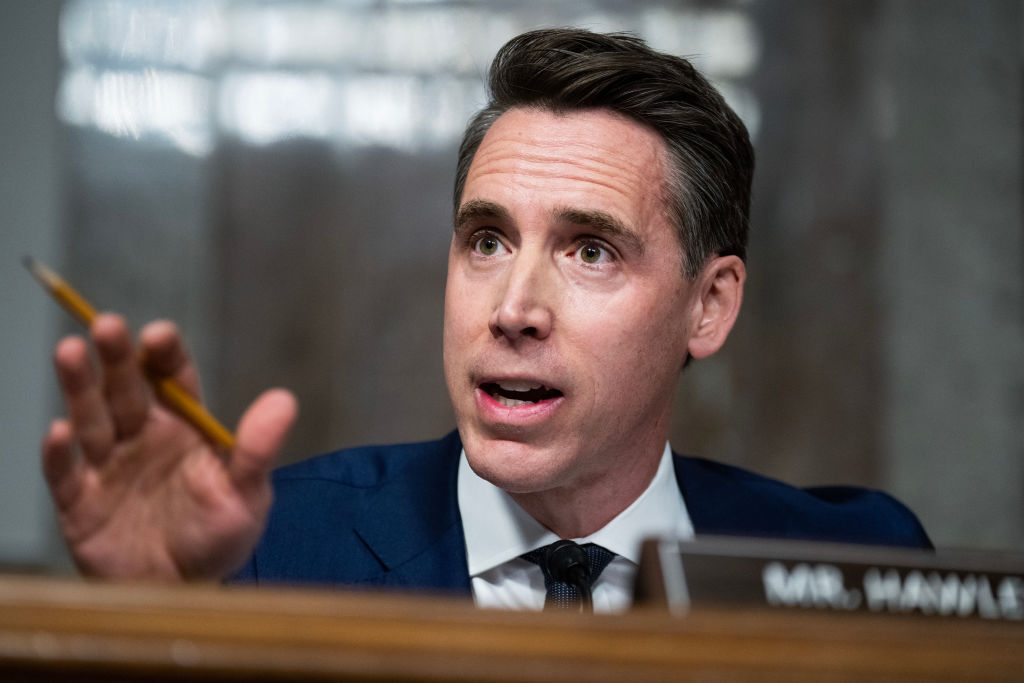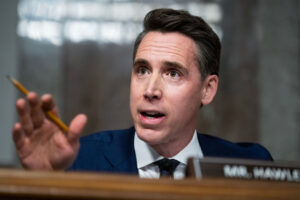Sen. Josh Hawley (R-Mo.) came into the Senate six years ago at age 39 as an acolyte of then-President Donald Trump, part of a new crop of Republicans who wanted to shake up the stuffy and more traditional Senate GOP Conference.
At first, Democrats wanted to stay far away. After Hawley defeated Sen. Claire McCaskill (D-Mo.), Democrats grouped him in with the “hell no” caucus — conservatives who vote against everything and want to grind the federal government to a halt.
That feeling was exacerbated after Jan. 6. Hawley’s fist pump outside the Capitol to pro-Trump protesters and his efforts to lead objections to President Joe Biden’s Electoral College victory drew further enmity from Democrats.
The tone was set early on. Hawley introduced himself to Sen. Jon Tester (D-Mont.) after being sworn in and got this response: “Oh, yeah, I know who you are. Claire McCaskill was my best friend in the Senate.” Ouch.
Fast-forward four years, and Hawley is cruising to a second term having cultivated some unlikely allies in a bid to push his own party in a new direction. While still a conservative stalwart, Hawley has attracted cross-aisle counterparts — including some of the most liberal senators — on issues that cut against traditional GOP orthodoxy.
“I’ve learned more about the institution and learned more about how to get things done,” Hawley told us, reflecting specifically on his push for more Covid-era stimulus checks with Sen. Bernie Sanders (I-Vt.). “As a really young junior senator at the time, I realized this is the ticket here … That showed me there’s a path here.”
Strange bedfellows: As a result, Democrats are comfortable working with Hawley in ways they wouldn’t have been a few years ago. Sen. Richard Blumenthal (D-Conn.) is partnering with Hawley on a more heavy-handed approach to regulating artificial intelligence, for example. Blumenthal told us he views Hawley as a reliable partner.
“He can be pretty insightful on issues like corporate power and abuse, the dangers of AI and advanced technology,” Blumenthal said of Hawley. “The areas of our agreement are sometimes surprising, but they’re basically non-ideological.”
Democratic senators we spoke with now see Hawley as something of a dealmaker — though in a nontraditional sense, of course. After all, Hawley wasn’t out there voting for the bipartisan deals struck during the last Congress.
Consider this, though. Hawley partnered with Sen. Ben Ray Luján (D-N.M.) to force a Senate vote earlier this year on re-upping a since-expired compensation program for victims of nuclear radiation. He even got Senate Minority Leader Mitch McConnell to vote for it after placing holds on two former McConnell staffers’ unrelated nominations.
Populism personified: Hawley’s economic views sometimes make him sound like a progressive on everything from crackdowns on corporate power to support for labor unions. He’s even marched in union picket lines.
In April, Hawley voted with Democrats to maintain a Biden administration NLRB rule that the rest of his party said amounted to overly burdensome red tape for employers.
Hawley has called for rolling back Citizens United, too, drawing a rebuke from McConnell during a closed-door GOP lunch. Hawley is pretty much the only Republican who backs getting rid of corporate cash in politics.
Conservatives have a “natural instinct” to be a firewall against government action, Hawley said, but added: “Are you just here to say no? Or are you here to do something?”
“I’m forthrightly trying to push my own party toward being more pro-labor, more pro-worker in general,” Hawley said. “And part of my strategy is finding willing partners across the aisle… You learn things in the process that I think makes me better at my job.”






